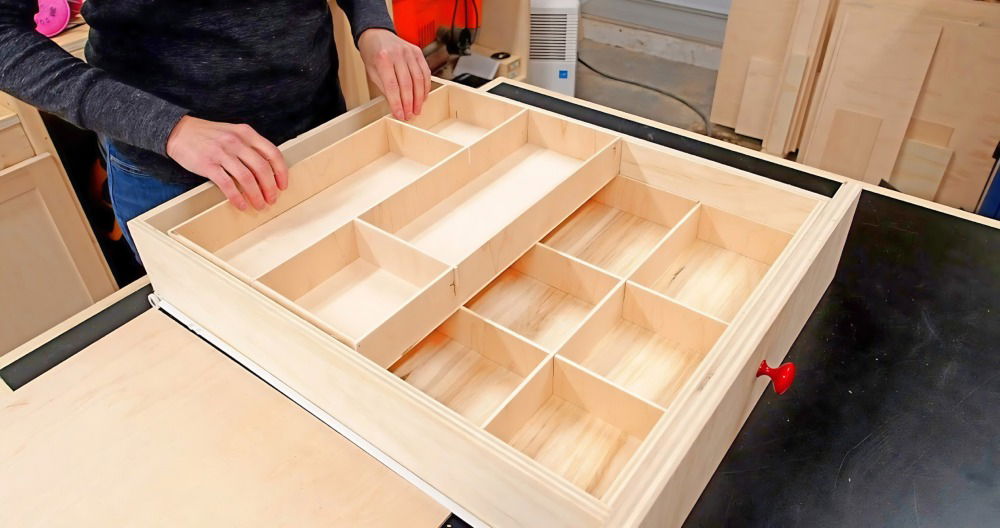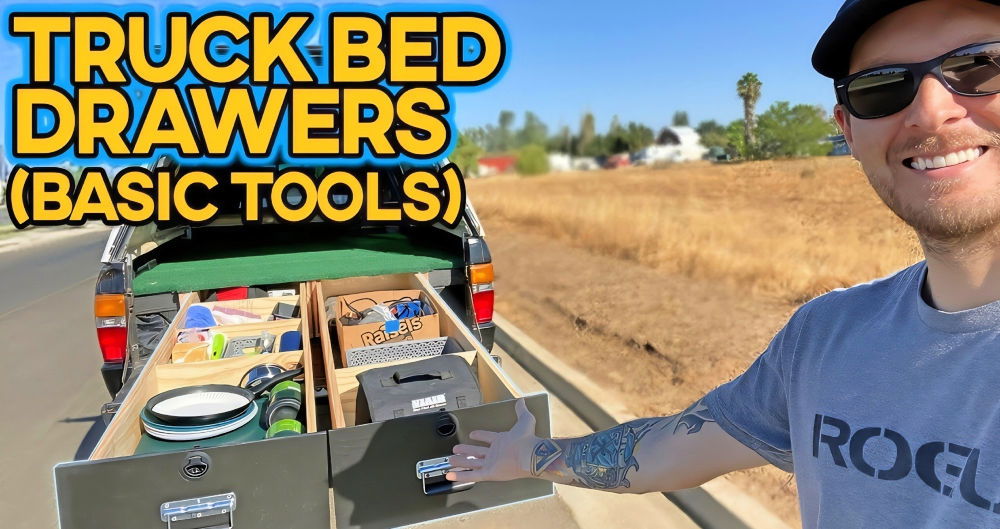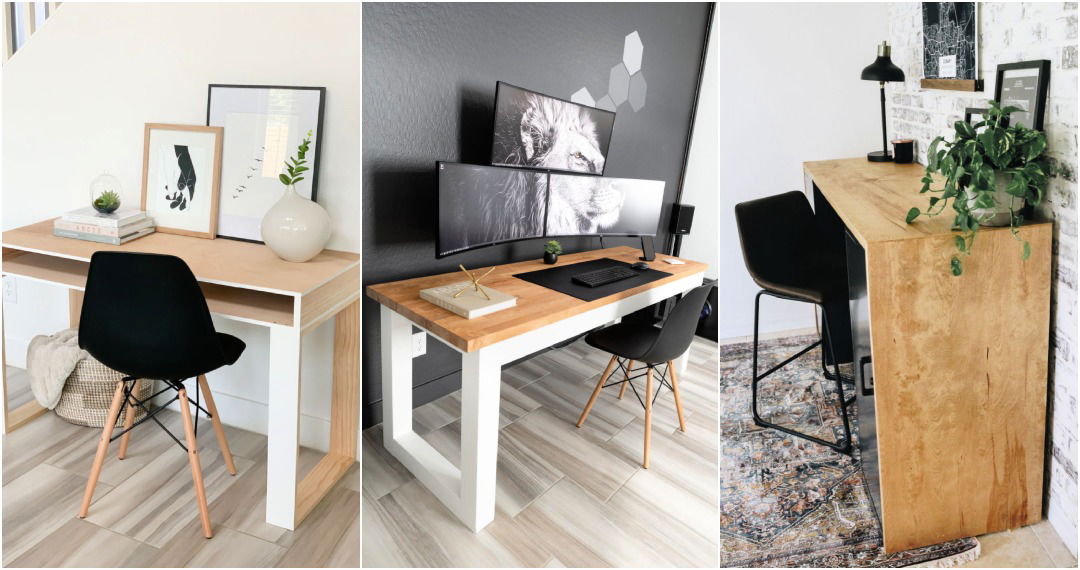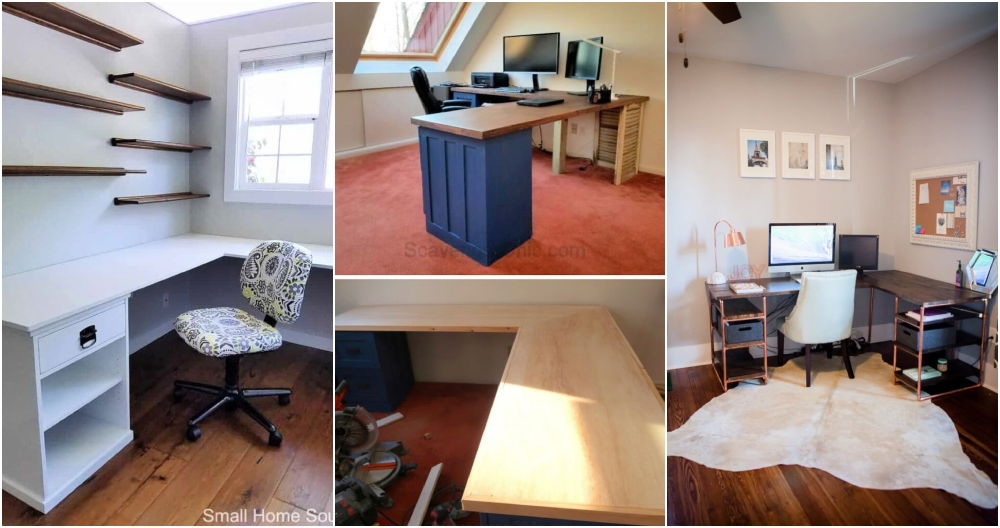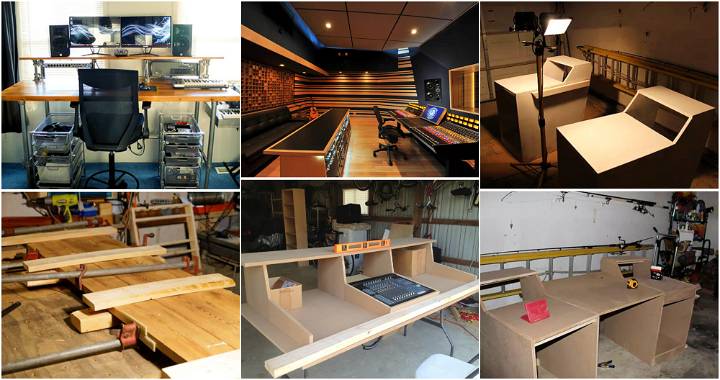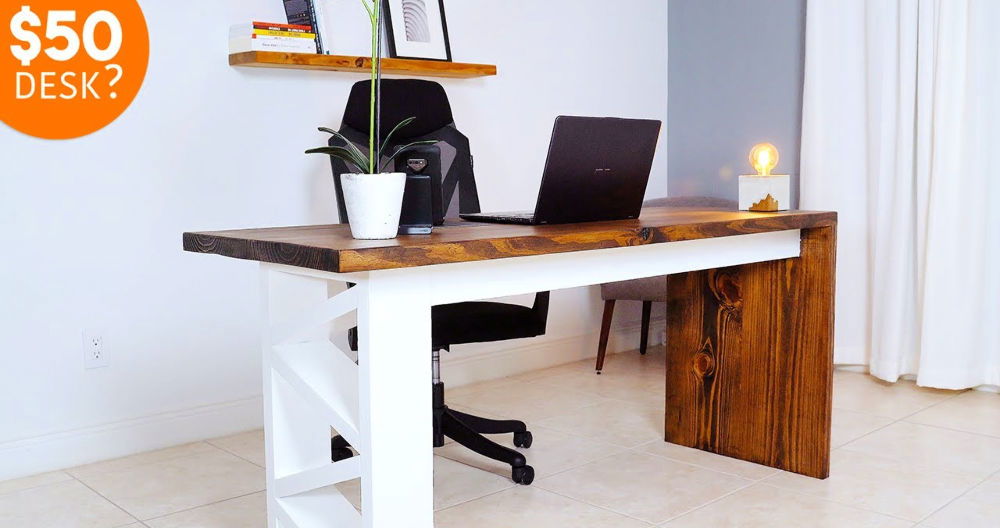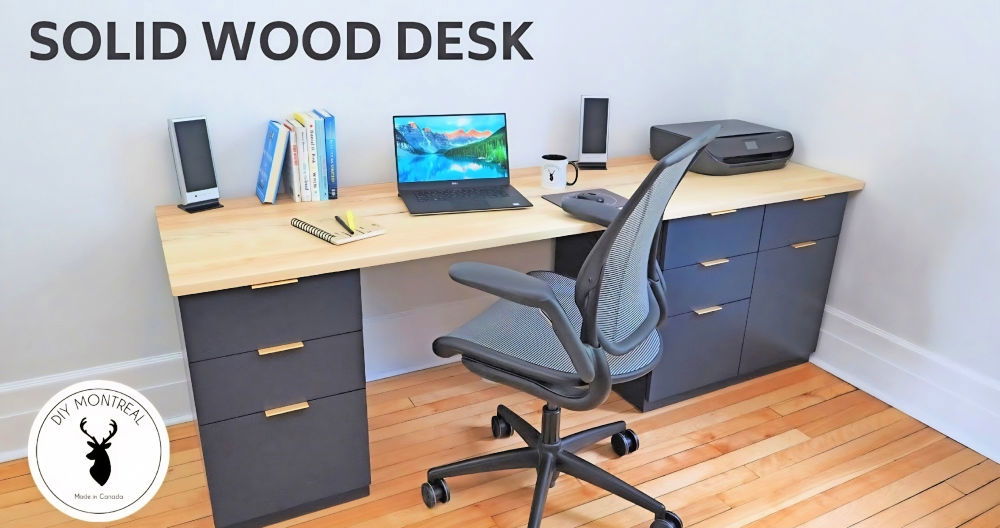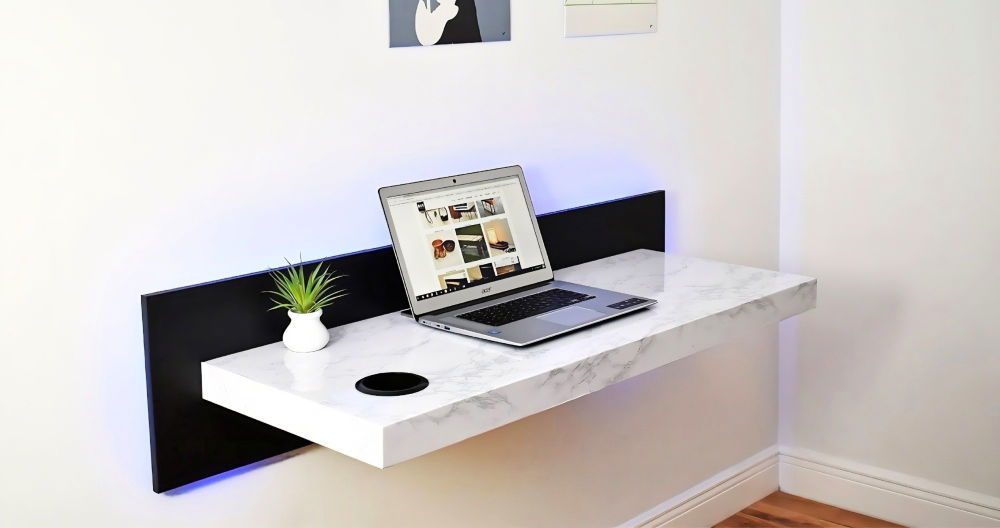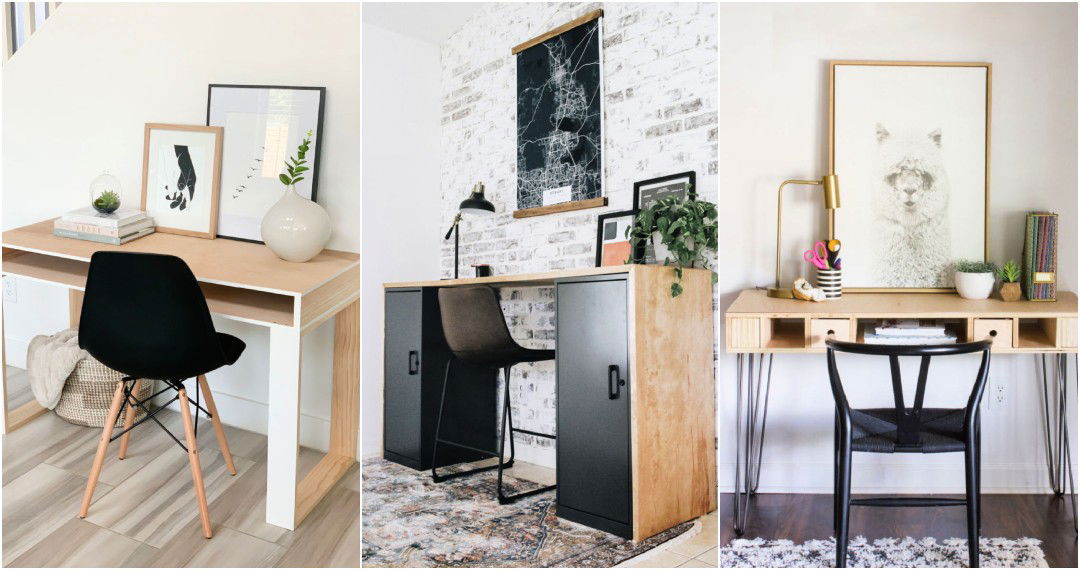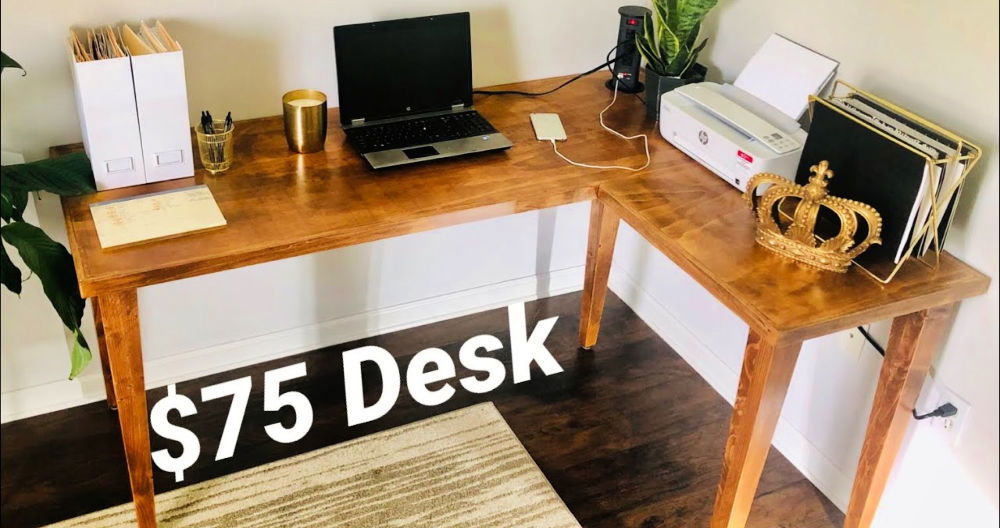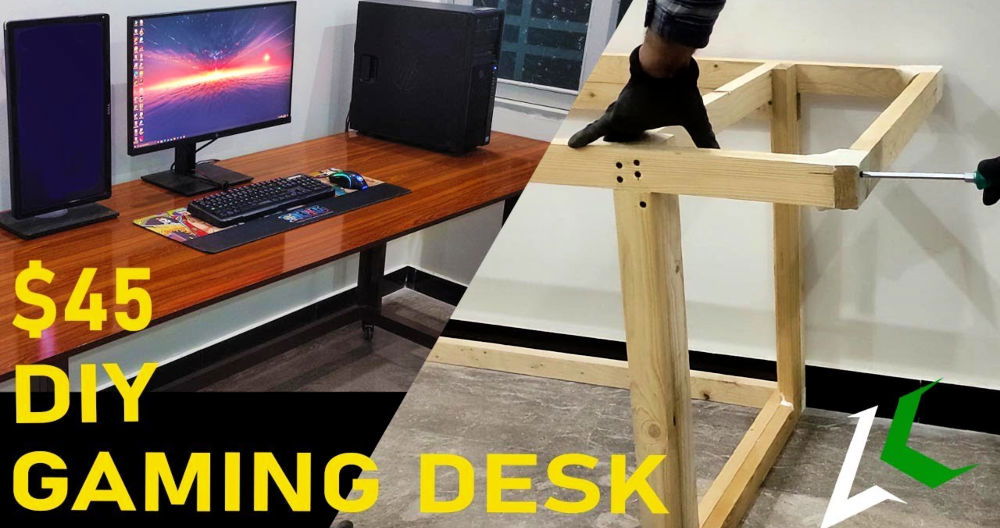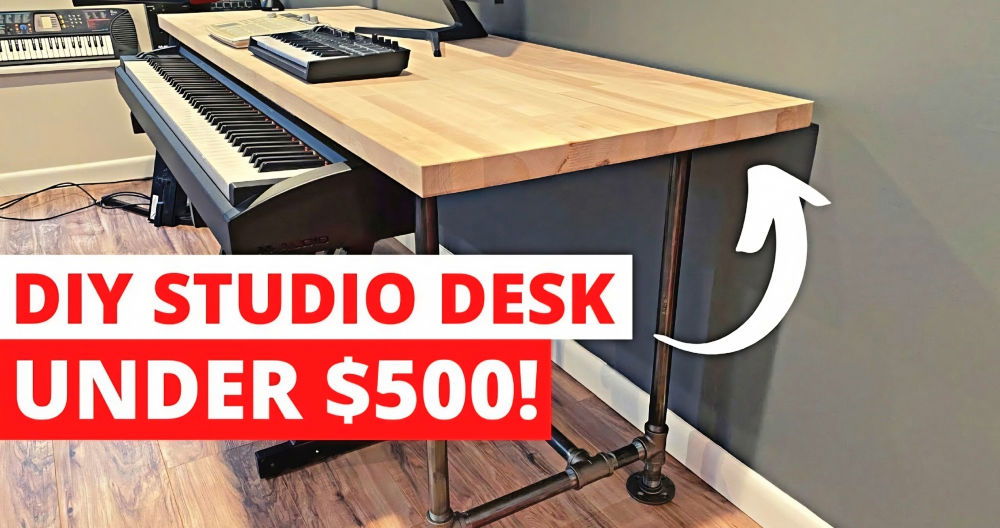I remember when I built my first DIY desk with drawers. I was a bit nervous but excited too. With some basic materials like wood, screws, and a drill, I laid out the design. Making the drawers was the tricky part, but I found that patience and measuring accurately were key. The final product was sturdy and looked great in my home office.
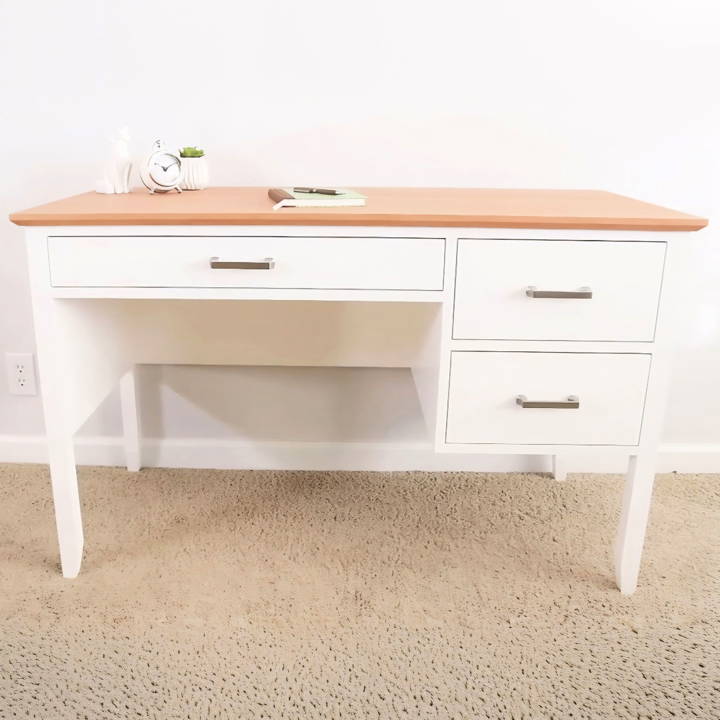
Building your own desk with drawers can be a rewarding experience. I suggest starting with a simple design to gain confidence. Follow clear steps and always double-check your measurements. This not only ensures a good fit but also saves you from costly mistakes. With these tips, you'll have a functional and attractive desk in no time.
Materials Needed and Their Purpose
- Plywood and 2x2 Lumber: These form the structure of the desk, providing sturdiness.
- Pocket Hole Jig (Kreg K4): Essential for making strong joints between pieces of wood.
- Saw (Miter and Table Saw): Needed for precise cutting of lumber and plywood to size.
- Cove Molding: Adds decorative detail to the desk, enhancing its appearance.
- Wood Glue and Screws: For assembling the desk securely.
- Painter's Tape and Wood Putty: Useful for finishing touches, ensuring a smooth, professional look.
- Spray Paint (Semi-gloss White Enamel): To add color and protect the wood.
- Cherry Hardwood: Chosen for the desktop for its durability and beauty.
- Drawer Slides (Full Extension): To ensure the drawers open smoothly and fully.
- Router (for Chamfering): To add an aesthetic touch to the edges of the hardwood top.
Step by Step Instructions
Learn how to build a DIY desk with drawers with our easy, step-by-step guide. Perfect for beginners looking to build custom furniture!
Building the Desk Sides
I started by cutting the plywood to size for the sides and then moved on to the 2x2s that would serve as the legs. Precision is key here; I used a stop block with my miter saw to ensure all cuts were uniform. Next, I added pocket holes to the plywood panels; my Kreg K4 jig was invaluable for this step. This jig, a cornerstone in many of my projects, ensured strong and hidden joints.
Assembling the Side Panels
With my pieces cut, I laid out the two legs and made sure the tapers faced inward before attaching the plywood panel with glue and screws. The addition of top and bottom trim pieces, secured with glue and brad nails, gave the desk its frame and panel look, while cove molding around the inside of the panel added a charming detail.
Building the Desk Frame
Connecting the sides with a plywood back and a front stretcher solidified the frame. Again, pocket holes were my go-to method for a clean finish. Ensuring the desk was square at this stage was crucial for the drawers to fit and operate smoothly later on.
Focusing on the Drawers
Building the drawers was perhaps the most daunting task. I made a box from plywood, using solid wood edge banding for a polished look. The drawers were designed to have full extension slides for ease of access. Keeping everything square and evenly spaced required patience and precision.
Finishing Touches
With the desk assembled, I turned my attention to painting. This stage transformed the desk, bringing it to life. Sanding between coats ensured a smooth, professional finish. The cherry hardwood top received a chamfered edge for a sleek look; this step required a gentle touch with the router followed by hand sanding.
Attaching the cherry top to the desk, I felt proud. This was more than furniture; it was a labor of love for my daughter, crafted with care and thought.
Customization Ideas for Your DIY Desk with Drawers
Building a DIY desk that's both functional and personal involves incorporating elements that reflect your style and meet your needs. Here are some customization ideas to make your desk uniquely yours:
Choose Your Style
Start by deciding on the overall look of your desk. Do you prefer a modern, minimalist design, or are you drawn to a rustic, industrial vibe? Select materials and finishes that align with your chosen aesthetic.
Drawer Handles and Knobs
The handles and knobs are small details that can make a big difference. Opt for sleek metal handles for a contemporary feel, or go for vintage knobs to add character to your desk.
Color Schemes
Paint can transform your desk. Whether you choose a bold color to make a statement or a soft hue for a calming effect, make sure it complements the room's decor.
Desk Surface
Consider using a laminate or veneer for a durable work surface that's easy to clean. If you're into crafts, a glass top might be useful for tracing and cutting.
Add-Ons
- Built-in Charging Station: Install USB ports and power outlets within the desk to keep your devices charged and reduce cable clutter.
- Cable Management: Add cable grommets or a cable tray underneath the desk to manage and hide wires.
- Adjustable Shelves: Incorporate adjustable shelves in the drawers or on the sides of the desk for customizable storage space.
Ergonomics
Ensure the desk height is comfortable for long periods of use. Consider adding a keyboard tray or a monitor stand for better posture.
Personal Touches
Display your personality with unique touches like a custom mouse pad, a desk mat with a map or artwork, or a photo frame with a motivational quote.
Greenery
Add some life to your desk with a small plant or a terrarium. Not only do they look great, but they also help purify the air.
Lighting
Good lighting is crucial. Attach a desk lamp or LED strips under the shelves for better visibility and ambiance.
Plan your DIY project well. Source materials and tools carefully, and ask for help if needed. These customization tips will help you build a desk that reflects your personality.
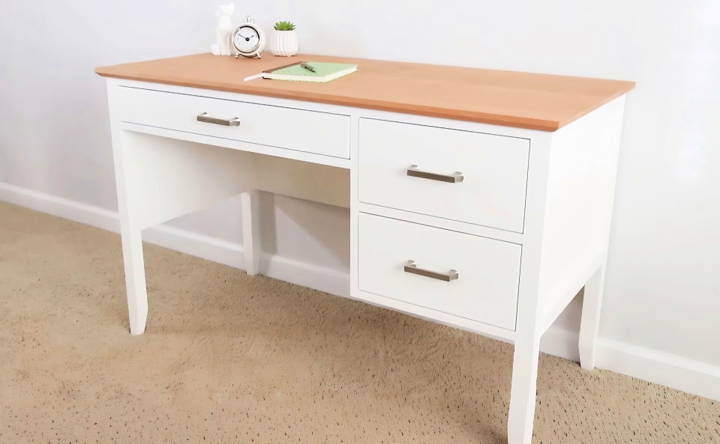
Advanced Techniques for Crafting Drawers
When you're ready to take your DIY desk with drawers to the next level, employing advanced woodworking techniques can elevate both the functionality and aesthetics of your project. Here's how you can apply some sophisticated methods to your drawers:
Dovetail Joints
Known for their strength and beauty, dovetail joints are a hallmark of quality craftsmanship. To build them:
- Mark the Tails and Pins: Use a marking gauge to define the depth of the tails and pins on your drawer sides and fronts.
- Cut the Tails: With a dovetail saw, cut along the marked lines for the tails, then remove the waste wood with a chisel.
- Shape the Pins: Fit the tail board onto the pin board and mark the pin locations. Cut along these lines and chisel out the waste.
Drawer Slides
For smooth operation, consider installing full-extension ball-bearing drawer slides. They allow the drawer to open completely and provide easy access to all contents.
Wood Selection
Choose hardwoods like maple or oak for the drawer fronts for a premium look and durability. For the sides, consider softer woods like poplar, which are easier to work with when making joints.
Finishing Touches
- Sand to Perfection: Start with a coarse grit sandpaper and work your way up to a fine grit for a smooth finish.
- Apply a Finish: Protect your wood and enhance its natural beauty with a finish like polyurethane, varnish, or oil.
Inlay Work
Add a decorative touch with inlay work using contrasting wood species or materials like mother-of-pearl for intricate patterns.
Secret Compartments
For added security, incorporate a hidden compartment in one of the drawers. This requires precise measurements and creative engineering to ensure it remains concealed.
Integrating these advanced techniques makes your DIY desk robust, functional, and artistic.
Troubleshooting Common Issues
When building a DIY desk with drawers, you might encounter a few hiccups along the way. Here's how to troubleshoot some common issues:
Sticking Drawers
If your drawer sticks when you open or close it, the culprit is often humidity or a misaligned track. To fix this:
- Check the Humidity: Wood expands in high humidity. If this is the case, wait for drier weather or use a dehumidifier.
- Adjust the Tracks: Ensure the drawer slides are aligned and tighten any loose screws. Apply a dry lubricant if needed.
Drawer Fronts Not Flush
Sometimes, the front of the drawer won't sit flush with the frame.
- Loosen the Screws: Slightly loosen the screws attaching the front to the drawer box, adjust it to be flush, and then retighten.
- Add Shims: If the issue persists, use thin pieces of wood or cardboard as shims behind the drawer front to even it out.
Squeaky Drawers
A squeaky drawer can be annoying but is usually an easy fix.
- Lubricate the Slides: Use a silicone-based lubricant on the drawer slides. Avoid oil-based products as they can attract dust.
Drawers Won't Stay Closed
If drawers keep sliding open, it might be due to an uneven desk or drawer slides.
- Level the Desk: Use a spirit level to check the desk's surface and adjust the legs as necessary.
- Check the Slides: Make sure the drawer slides aren't damaged and are installed correctly.
Loose Handles or Knobs
Handles and knobs can become loose over time.
- Tighten the Hardware: Use a screwdriver to tighten the screws. If they keep loosening, apply a thread-locking compound to the screws.
Wood Splitting
When working with wood, you might find it splitting as you insert screws.
- Pre-drill Holes: Always pre-drill holes to prevent splitting, especially near the ends of boards.
- Use the Correct Screws: Ensure you're using wood screws and not metal screws, which can cause more splitting.
By being prepared to address these common issues, you'll ensure the construction of your DIY desk goes smoothly.
FAQs About DIY Desk with Drawers
Discover faqs about DIY desks with drawers! Get insights, step-by-step guides, and expert tips for making your perfect desk.
Begin by deciding the size, shape, and number of drawers you need. Measure your available space and consider your storage needs. Sketch a simple design or find inspiration online. Ensure your plan includes all dimensions and materials required.
Yes, you can! Start with a simple design and follow step-by-step instructions. Use basic tools and ask for help when needed. Safety is paramount, so wear protective gear and work carefully. There are many resources available for beginners to guide you through the process.
To ensure smooth operation, use quality drawer slides and install them according to the manufacturer's instructions. Make sure the drawers are square and the slides are aligned. Test the drawers before final installation to make adjustments as needed.
For a professional finish, sand the desk thoroughly to remove any rough spots. Apply a stain or paint to match your decor. Consider adding a protective clear coat for durability. Install hardware like drawer pulls or knobs for functionality and style.
To maintain your desk, regularly clean it with a soft, damp cloth and avoid harsh chemicals that can damage the wood finish. Tighten any loose screws or hardware periodically. If your desk has a protective finish, reapply it every few years to keep the wood from drying out or getting damaged. Use coasters or pads to protect the surface from scratches and spills.
Conclusion:
Wrapping up, building a DIY desk with drawers can be a rewarding project. It offers customization to fit your unique needs and space. With our guide on how to build a DIY desk with drawers, you'll have a practical and stylish addition to any room. Dive into your simple desk with drawers project today and enjoy the satisfaction of a job well done.


